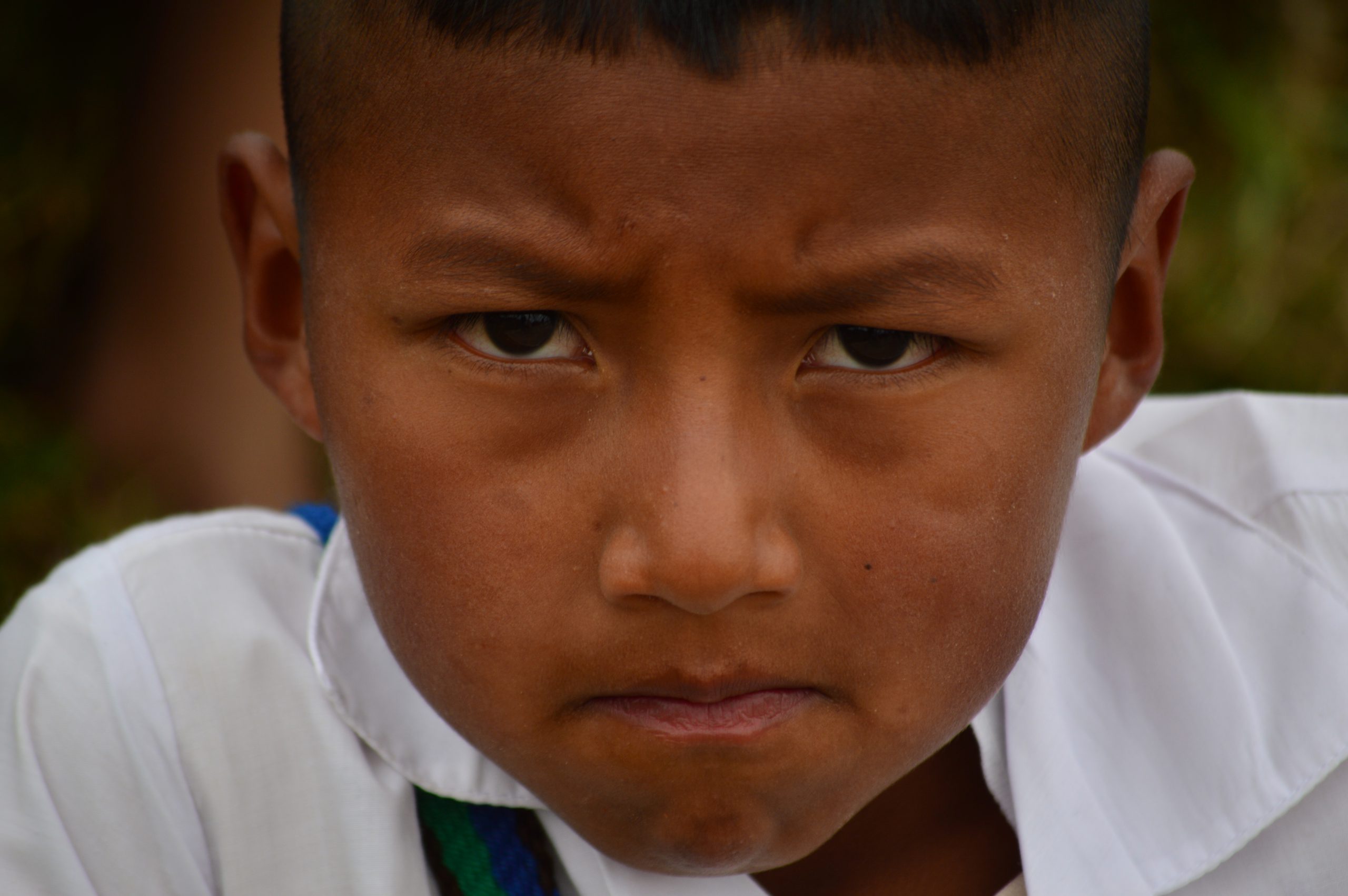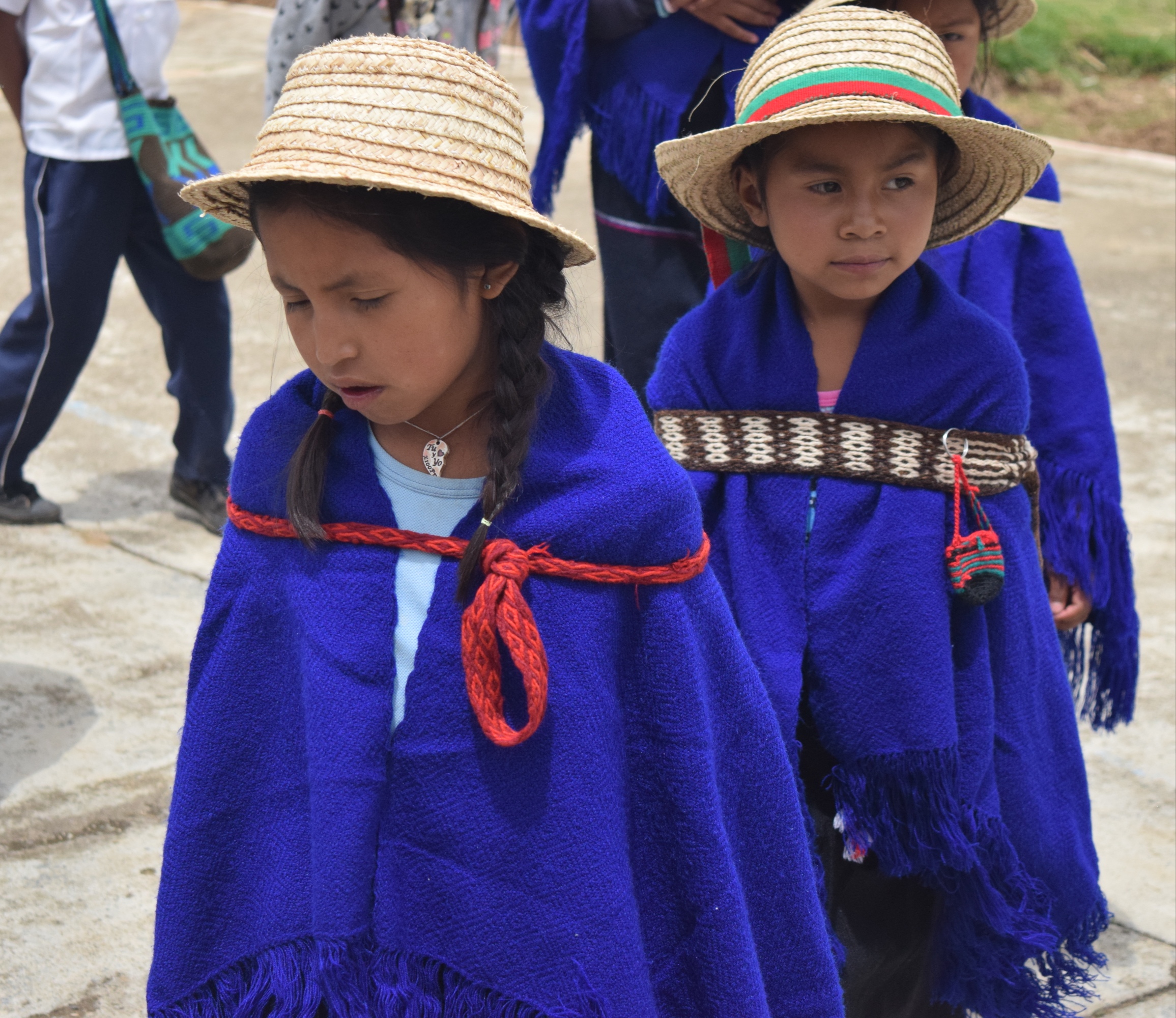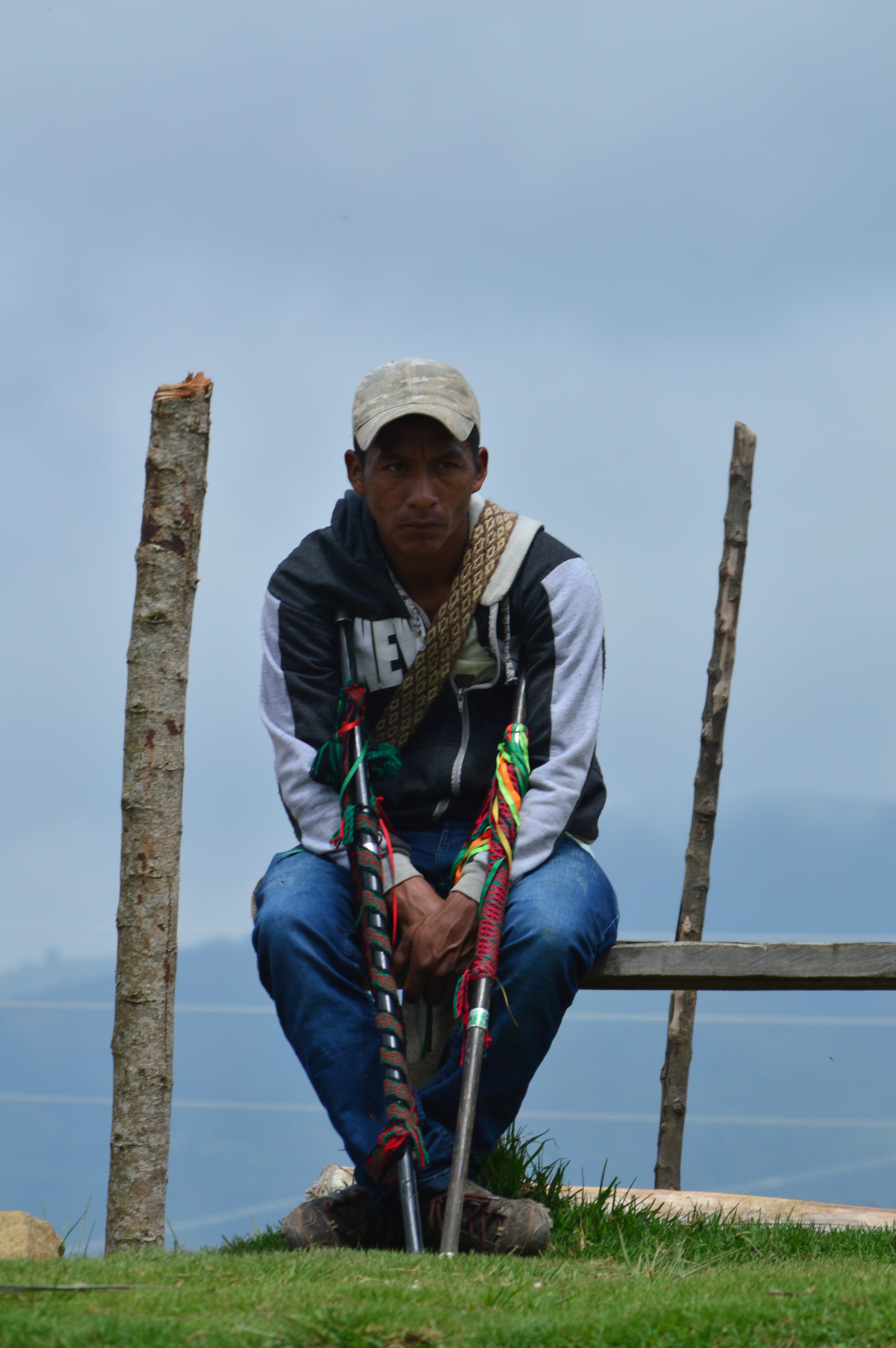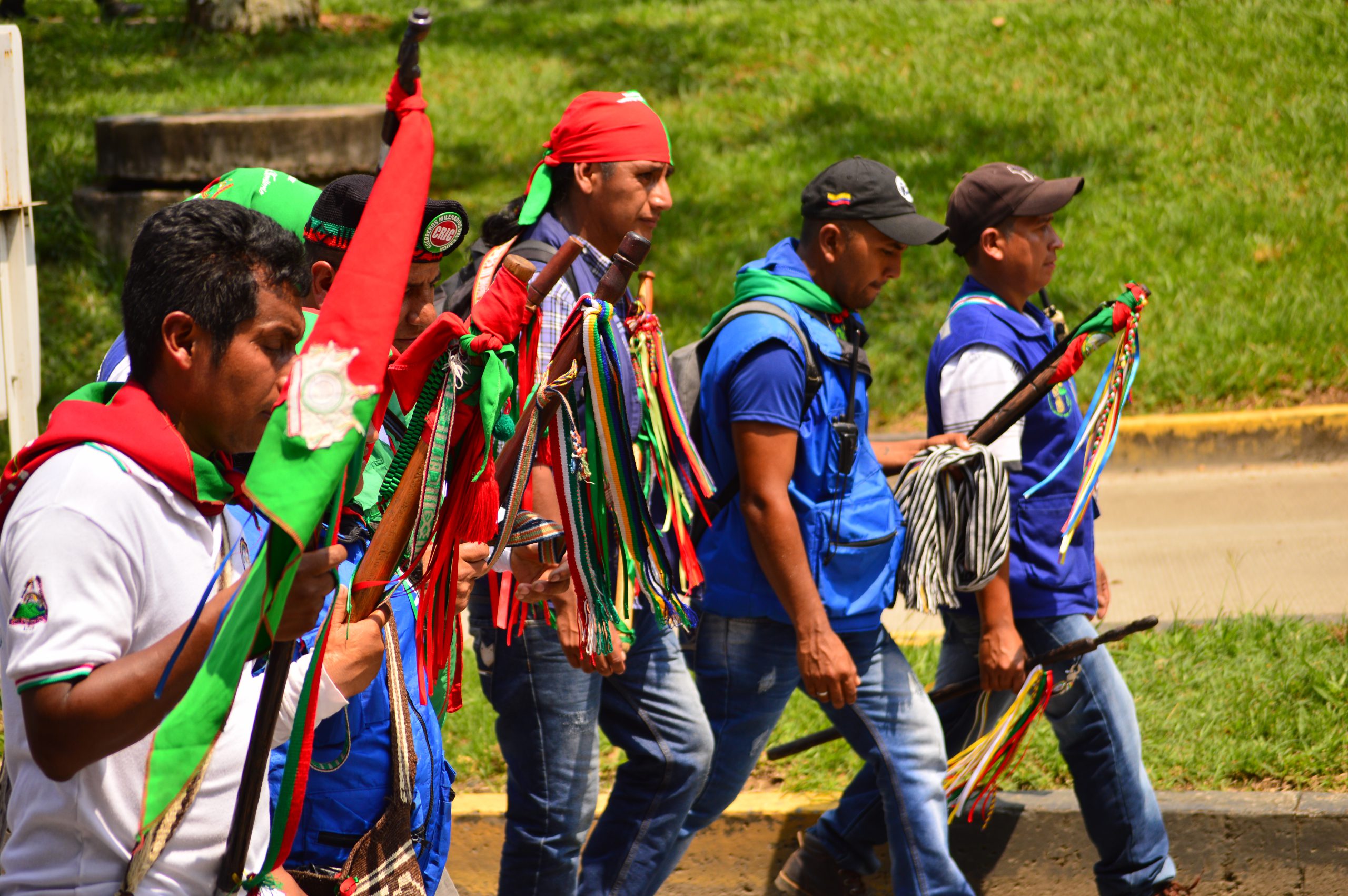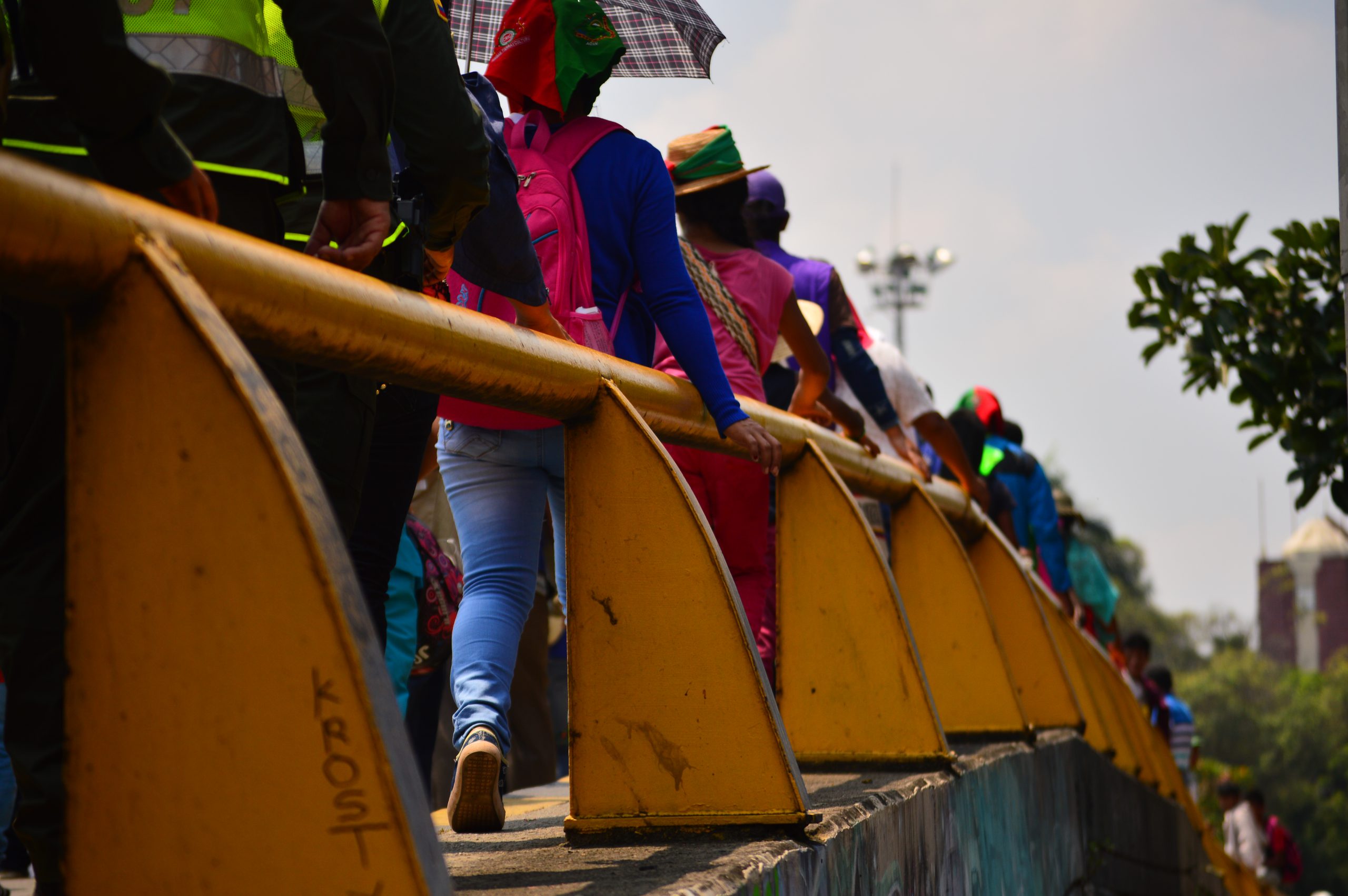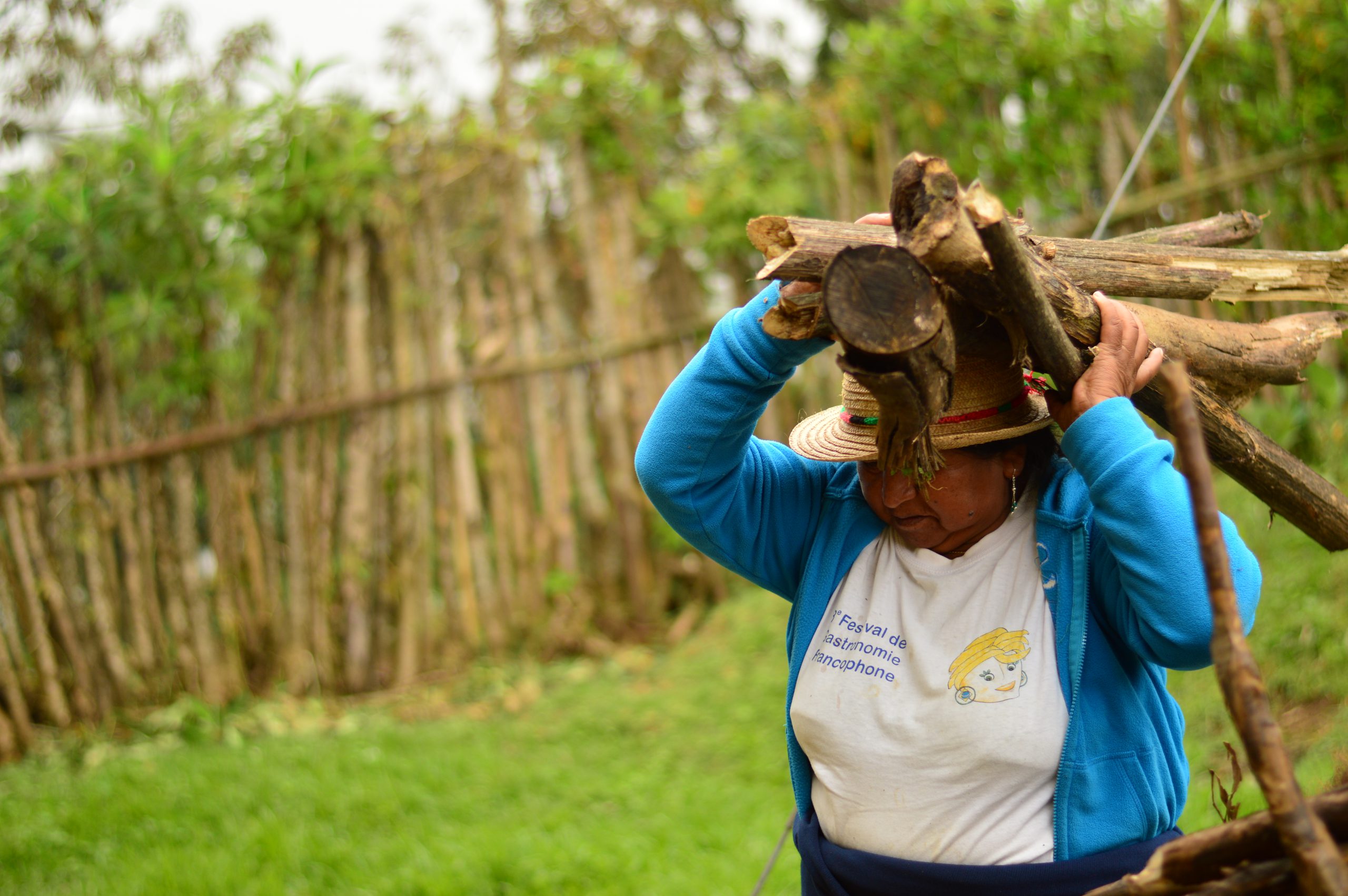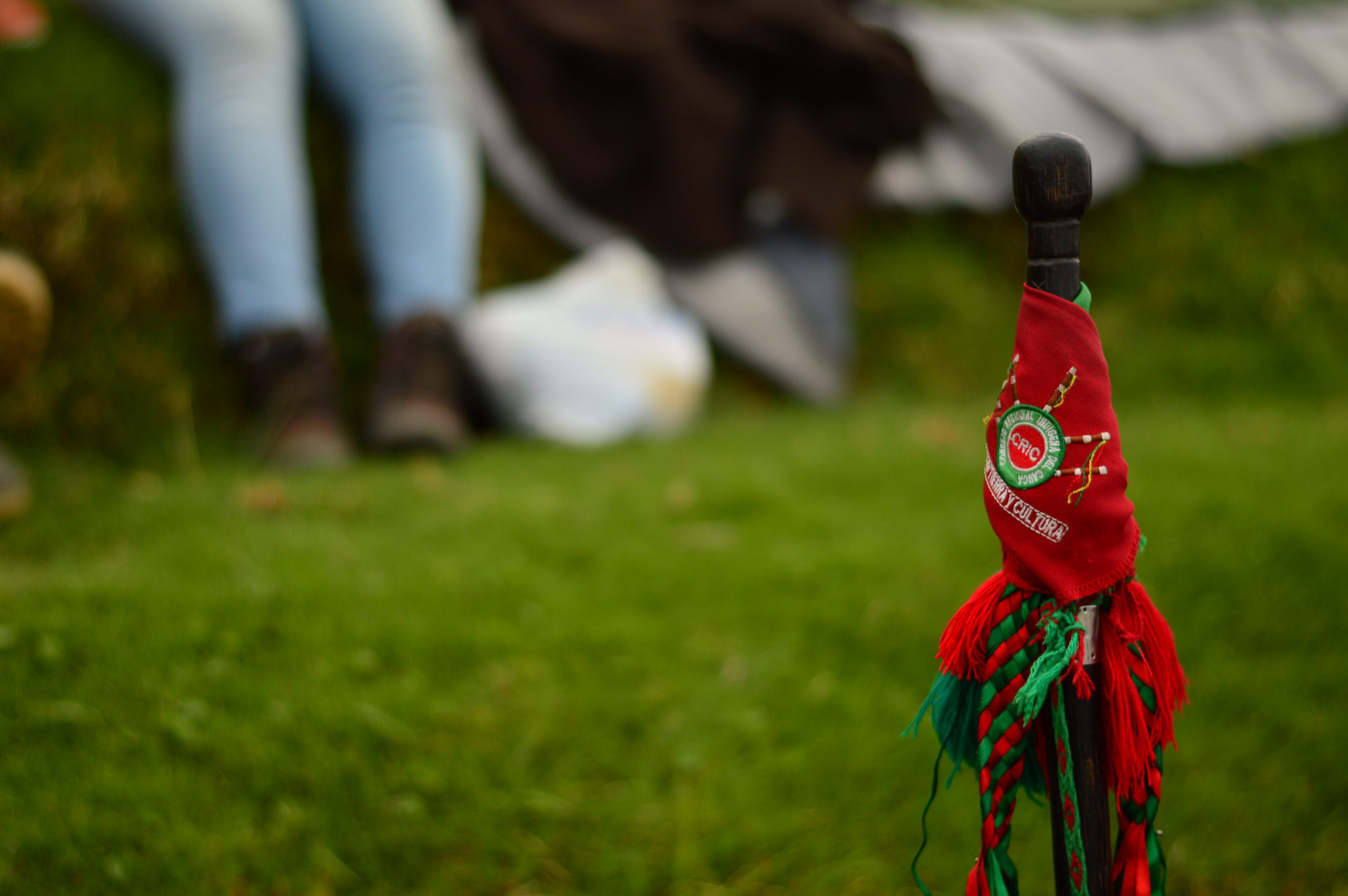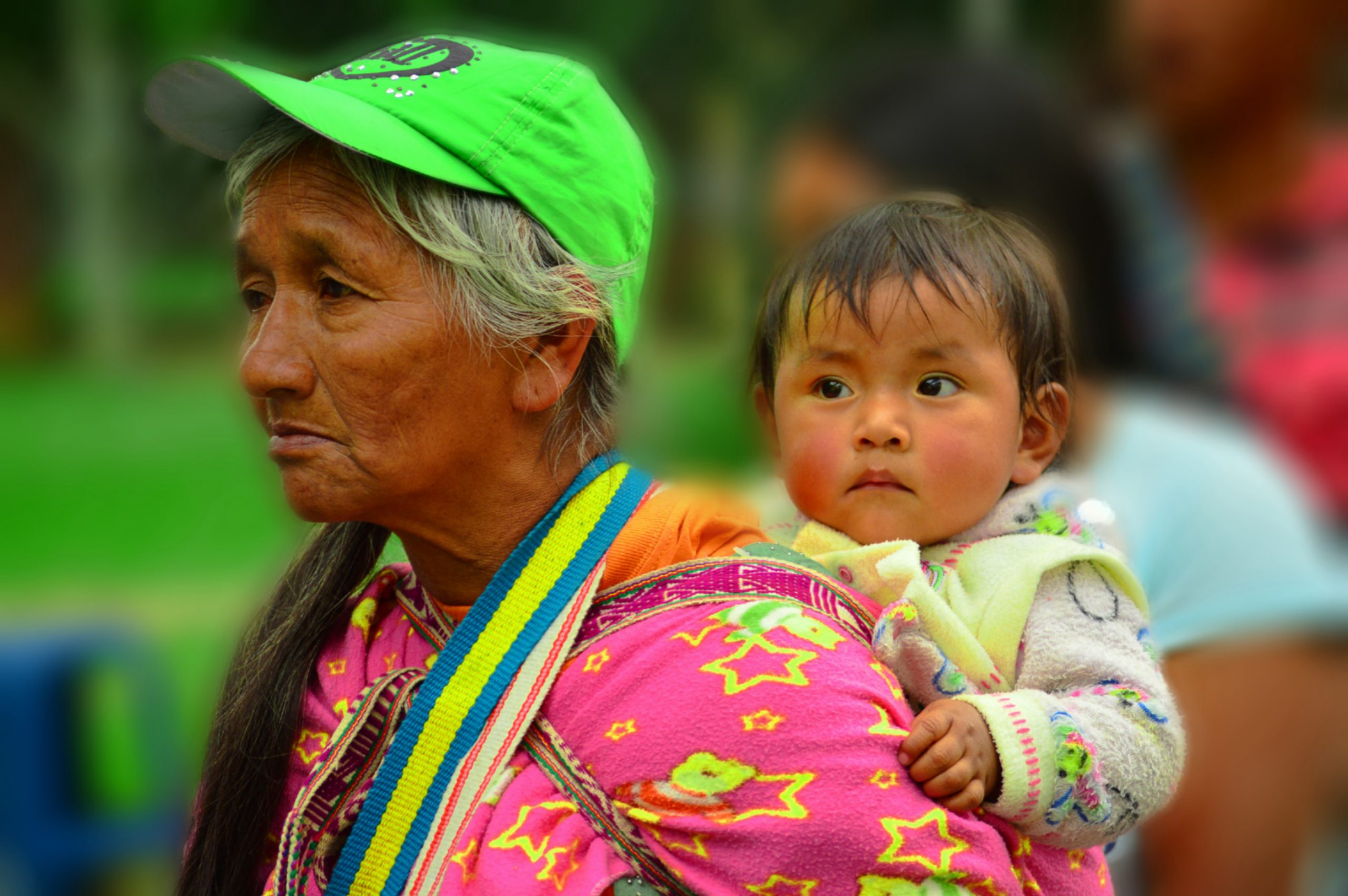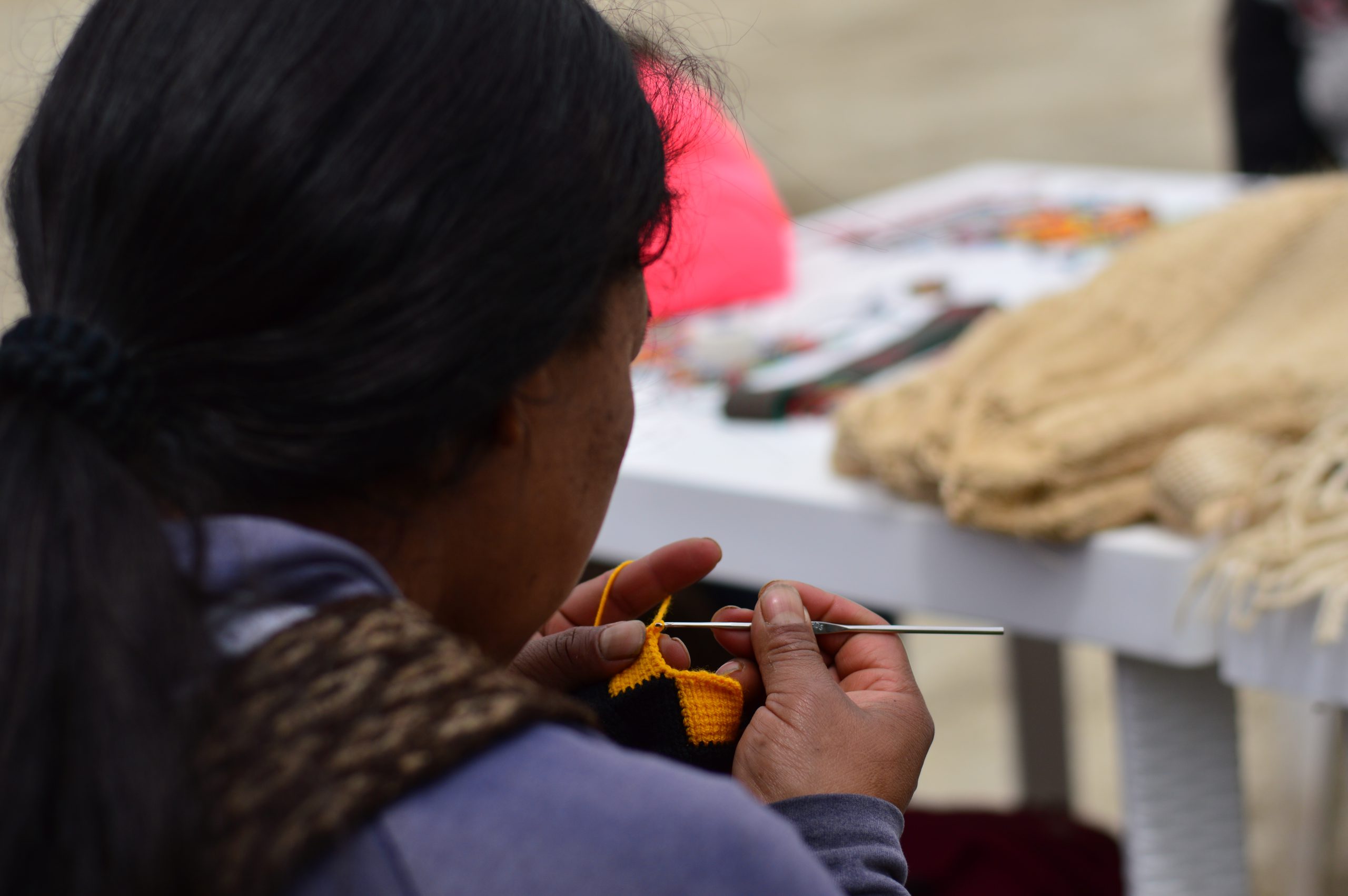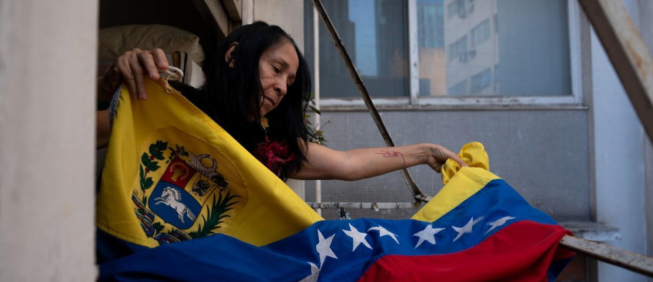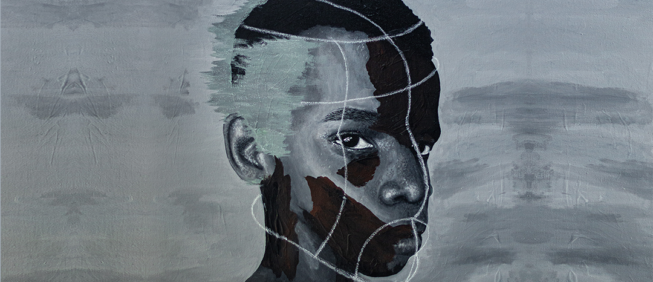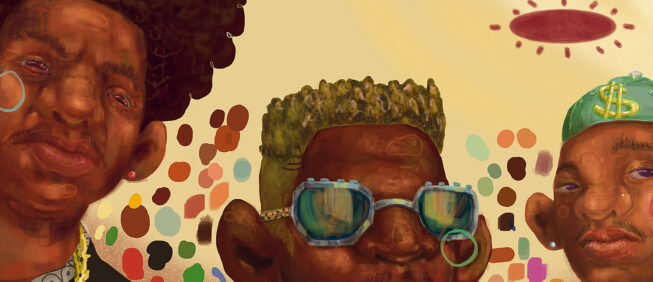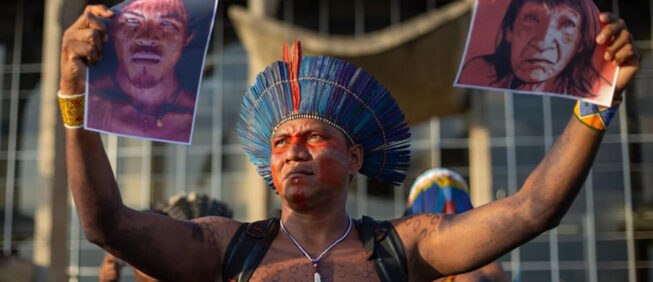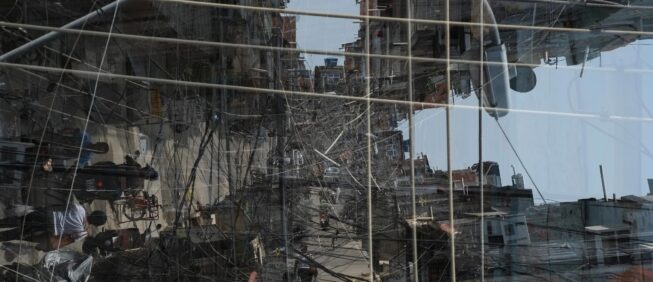Challenging 'buen vivir'
Photographic Essay: A Sketch of the Forms of Buen Viver of Pioyá, Cauca
Vilma Almendra
Emmanuel Rozental
Edwin Pipicano
Ángela Gutiérrez
Jorge Sarria
| Colombia |
18 de July de 2019
The Indigenous movement of Cauca, Colombia has historically been characterized by the many resistance movements that have emerged from Colombia’s armed and negotiated struggles. Its wider recognition, both nationally and internationally, has come as a result of land recoveries carried out between the 1970s and 1990s and the creation of the Consejo Regional Indígena del Cauca (Regional Indigenous Council of Cauca, CRIC), one of the continent’s first Indigenous organisations. The process of resistance has also promoted the grassroots organization of communities in the Nasa Indigenous areas, which came together to form the Asociación de Cabildos Indígenas del Norte del Cauca (Association of Indigenous Councils of Northern Cauca, ACIN)[1] in the 1990s.
Although land recovery and the creation of grassroots organisations were already symbols of resistance for the Indigenous communities of Cauca, the fundamental transformation that came from the communities was the consolidation of “Life Plans” (Planes de Vida). The Life Plans, which are defined communally as the Sxa'w (literally the “collective dream” in Nasa Yuwe, the language of the Nasa people), seek to walk hand-in-hand and in harmony with Uma Kiwe (Mother Earth),[2] and to confront the Project of Death, which is collectively understood as the transnational economic model.[3]
What was actually taking place was the revitalization of autonomy and the emergence of alternatives based on ancestral principles, guided by our sense of Wët wët fxi`zenxi (Buenos Vivires, or “forms of Good Living”), as opposed to the ideals of “development” and “progress” which the State has imposed for more than two centuries. Precisely because of this, ACIN came to be one of the most recognised Indigenous organisations in Colombia in the 2000s. It acquired international visibility for promoting large mobilisations[4] and, at the same time, for strengthening alternative forms of economy and organisation designed to promote and defend life. These other forms were targeted when their resistance and opposition to State policies benefiting transnational companies became clear. As a result, counter-strategies emerged intent on neutralising and demobilising the construction of autonomous governments working with the principles of “Buenos Viveres.” These strategies involved the complicity of some leaders and sectors of the community, who allowed themselves to be convinced by the promises of “peace” agreements for the benefit of “free trade.” Taking all of the above into account, this text will seek to sketch out: some of the principles of Buen Vivir proposed by Indigenous peoples; the meaning and practice of Wët wët fxi`zen xi for some Indigenous communities in Northern Cauca, Colombia; some of the characteristics that highlight important differences between Buen Vivir and development; and some basic reflections.
Buen Vivir: The Search to Balance and Harmonise Life and Nature
In recent years, the concept of Buen Vivir (as conceived by Indigenous peoples from Ecuador and Bolivia, known in Kichwa as “SumakvKawsay” and in Aymara as “Suma Qamaña”), refers to a life of dignity and fullness, made up of everyday acts of goodwill and political practices which understand the relationship with nature differently and seek to ensure the survival of all peoples. This is reiterated by one of the most recognized Kichwa leaders in AbyavYala:
As a literal translation, Sumak Kawsay would mean life in full, excellence, the best, the beautiful. But, as it has already been interpreted in political terms, it refers to life itself, as a mixture of tasks and political desires, resulting in changes so that people do not go without their daily bread and so that there are no social inequalities between men and women. Sumak Kawsay is the dream not only for Indigenous peoples, but for all peoples. When we talk about Sumak Kawsay, it is not about returning to the past, because we cannot say that the past was perfect, but we can say that we had, and lived by, the principles of Sumak Kawsay. (Chancoso, 2010: 456)[5]
It is a concept that has given rise to various discussions, reflections, and debates. The meaning and practices of Buen Vivir emerge from the heart of Andean communities and they are nourished and enriched with contributions from intellectuals committed to Indigenous resistance. However, unfortunately, the organic intellectuals in the service of the nation-state, mainly in Ecuador, have appropriated Buen Vivir as discourse to legitimize neoliberal policies. In practice, they have totally drained the concept of Buen Vivir of all meaning, while continuing to tout the idea of life in its fullness in their speeches (Plan V, 2014).
Carlos Pérez Guartambel, as the president of the Kichwa Confederation of Ecuador (Ecuarrunari), affirmed that, in order to sustain a different relationship with nature, some basic elements for Buen Vivir must be taken into account. He stated what these represent and imply:
[...] air, earth, water and fire. In turn, each represents reciprocity, complementarity, integrality and proportionality. Reciprocity with solidarity, the minga; complementarity with that which is included in representation, for which there is no competition; there is no dominator or dominated; man and woman complement each other; black, white; that which is above, that which is below; fire and water. Integrality as the holistic vision that links everything together. And proportionality, the issue of justice, giving and receiving. (Pérez Guartambel, cited in Plan V, 2014)
In this way, Buen Vivir is relevant not only because of its philosophical nature, which Indigenous peoples use to guide the actions that involve them with nature, but is also pertinent for the direction of collective practices in community life. Clearly, reciprocity involves caring for and protecting Mother Earth so that she continues to provide all of the food that the community needs. At the same, it involves being supportive and participating in various communal tasks for the benefit of everyone. In this sense, we consider that all of these principles, as explained by Pérez Guartambel, are manifested in the minga. This is an ancestral, daily practice which still continues today, where men, women, old people, and children come together; it concerns
[...] a collective effort organised for the purpose of achieving a common goal. When a minga is organised, it has priority over other activities, which are postponed in order to fulfill the common purpose.
The products of the minga do not belong to anyone. The accomplishment is collective and nobody, in any way, can appropriate it. Mingas show the maturity of the communities. Discipline, the ability to act as a community. Humility, the contribution of maximum individual effort to collective achievement. Awareness that the communal exceeds the individual, but that each individual effort is essential. These are all elements that serve to prove the exemplary quality of a minga. (ACIN, 2008)
Buen Vivir is the foundation of the thought of Indigenous peoples, emanating from a harmonious and balanced relationship between human beings and Mother Earth. For this reason, it does not accept dominion over, nor the destruction of, communal possessions. This contrasts to the function of the nation-state as “a juridical order whose general purpose is to exercise sovereign power over a given territory and to which the individuals that belong to it are necessarily subordinated” (Bobbio, 1989). This role of the nation-state has intensified the implementation of a transnational extractivist model which is, in fact, destroying nature (Zibechi, 2010).
In the same way, Buen Vivir as an established category is not a finished or closed concept. It is like life in community, like daily relationships. It is as the nature of practices should be: reproductive, constructive, and changeable, in accordance with the common need and context. That is to say that it is the opposite of what is imposed by the hermetic nature of the transnational economic model, with its policies of dispossession and exploitation. In this way,
[...] it is clear, therefore, that Buen Vivir is a plural concept (it would be better to speak of Buenos Vivires [forms of good living] or Buenos Convivires [forms of good coexistence]) which emerges especially from Indigenous communities, without denying the technological advantages of the modern world, nor possible contributions from other cultures and other forms of knowledge which question different aspects of the dominant modernity. As the Zapatistas put it, the task is to build one world with space for all the different worlds, without anyone living worse for another to live better. (Acosta, 2013)
Wët wët fxi`zenxi the Worldview of the Nasa People
Although Buen Vivir has only recently become politically visible, it is a daily practice that unites communities with Mother Earth. It is a practice that transforms according to community dynamics and historical contexts. In the same way that it has special names in Bolivia and Ecuador, Buen Vivir for the Nasa people of the north of Cauca is known as Wët wët fxi`zenxi (forms of Good Living). In Nasa Yuwe it means:
(to live and to be well, to coexist in joy) and it sets the guidelines of a harmonious way of life between all life forms. […] What damages Wët wët fxi`zenxi, is capitalism, “bad living” that degrades the human heart and breaks up community relationships. (Tejido de Educación ACIN, 2014)
To understand the community experience and the practice of Wët wët fxi`zenxi, it is necessary to briefly sketch out the features of the ancestral path which interweaves the Buenos Vivires of the Indigenous peoples of Cauca. This consists of at least four historical moments:
The period of resistance, which was led by Cacica Gaitana in the sixteenth century with the armed struggle (the Spanish Conquest); by Juan Tama and Manuel de Quilos-Ciclos in the seventeenth century through negotiations (Spanish Colonial Period); and by Manuel Quintín Lame in the nineteenth and twentieth centuries, with the awakening of consciousness and concrete action (the Republican Period). The recovery period, which is characterised by land occupation led by Indigenous people and peasants with the slogan “Land for the people”. The period also saw the birth of the Consejo Regional Indígena del Cauca-CRIC [Regional Indigenous Council of Cauca] on February 24, 1971, which achieved one of the most famous agrarian reforms in Latin America and the largest in Colombian history.[6] The period of autonomy, motivated by Father Álvaro Ulcué Chocué from Toribío, Cauca in the 1980s, which saw the creation of community projects in the northern area of Cauca, and which remains one of the most successful practical experiences. The period of alternatives, which stemmed from the Congreso Indígena y Popular [Indigenous and Popular Congress] held in 2004, when nearly 60 thousand, mainly Indigenous, people from Cauca walked to Cali. They called for the unity of the people to reject constitutional reform, to demand respect for life and to refuse the systematic aggression that came from free trade agreements with the USA (Tejido Comunicación ACIN, 2009).
In this journey, it is worth focusing on the last two periods, in which we can clearly see that Wët wët fxi`zenxi has been strengthened through grassroots political organisation and collective actions, both internal and external. After major land recoveries in Cauca, recognized as one of the most extensive and efficient agrarian reforms in Colombia,[7] a process of autonomy was initiated with the strengthening of traditional authority and its different forms of organisation. However, beyond these organizational structures lay two elements that proved fundamental to the pursuit of autonomy: the recovery of the Asamblea [assembly] as the highest instance of collective community decision-making,[8] and the Minga, as collective action within the territory. Without the Asamblea or the community Minga, it would be impossible to defend or care for our territories. In addition to the Indigenous Cabildos [councils],[9] which function as the authority over each one of the Resguardos[reservations] and which are made up of an unpaid, collectively-elected community body of men and women; we have the Planes de Vida [life plans] or community projects that survey collective dreams based in the principle of continued existence in the territories; and we have, since the 2000s, the ACIN’s Tejidos de Vida [lit. life weaves] which operate as technical instruments to prioritise and punctually organise political work in various territorial areas.
At the same time that this grassroots organisational political process was going on, we were also recreating the Tul, or community vegetable plots where we plant crops to guarantee our own supply of healthy food, and from which any surpluses are sold in local towns. We were also re-establising places for the exchange of goods, where the communities from cold climates could meet with those from hot climates to exchange food; the Seed Bank, a movement to encourage farmers to save the best seeds of each harvest to guarantee a successful harvest the following year; mutual funds through which several families would come together to work on agricultural, livestock, production and industrialisation projects; and community stores, which are in charge of marketing the products to generate resources to sustain the Planes de Vida.
In short, the traditional community ways that we had been recreating—along with others that we haven’t managed to mention—began a process of renewing the path of Wët wët fxi`zenxi as central to Nasa thought, which maintains that “words without action are empty, actions without words are blind, words and actions outside community spirit are death”; that is, the discourse of Buen Vivir has to be turned into practice. In this way, communities in the midst of permanent aggression and continuous warfare were doing their best to keep up with the eight principles named by Hugo Blanco Galdós that we have compiled here, emblematic of Wët wët fxi`zenxi:
Love for Mother Earth and obedience to the command to preserve and protect her, because she is SACRED, 2. The economy and material conditions must be subordinate to life. Life is sacred, not “the economy,” not accumulation, 3. Attachment to memory and to the past, to remembering and learning from the experiences and the wisdom of the older generation, as well as a commitment to the future (7 future generations). The present is one moment. Re-appropriating and redeveloping, 4. The collective and the communal: creators of community, 5. Vivir Bien. To have only in order to be. The pleasure of a harmonious life is sacred. Wisdom is the legacy and is the greatest resource. Live that wisdom. Accumulation is not a value, but rather a mistake, 6. Lead by obeying. Authority is in the collective and in the debate. Representation is not delegated, 7. Democratic and participatory. Contrary to power. Areas of debate and collective reflection. Disagreements and differences are welcome. Listening is a privilege, an opportunity. It is not about accumulating knowledge as a commodity, but about sharing and building it collectively. Disdain for hierarchies, 8. Love for diversity. (Pueblos en Camino, 2013)
Therefore, Wët wët fxi`zenxi is a teleology, a permanent collective search in a changing context which is full of contradictions and internal and external demands. The above, obviously, means that community relations are not harmonious, but rather the harmony and balance between men, women and with Uma Kiweis precisely what is sought. The dynamics of these other relations, therefore, are traversed by external factors such as war, dispossession, displacement, laws which favour transnational companies and media propaganda, among others. They are also affected by internal contradictions and struggles that are difficult to tackle when Indigenous authorities and sectors of the community have been captured by the ambition and greed of capital. It is difficult to talk about Buenos Vivires in the midst of war, and within territories that are being reformed by the mafiosity and capitalist extractivism of accumulation. Even so, we exist, we re-exist and we want to continue existing, and that is why, in the midst of death, Buenos Vivires become the means to defend life as a whole.
Buenos Vivires and Development
There are contradictions and oppositions between Indigenous cultures, which claim and fight for Buen Vivir, and Western culture, which imposes development for the benefit of transnational companies and national economic elites.
Development, defined “sometimes as a state, sometimes a process, both related to the ideas of well-being, progress, social justice, economic growth, personal expansion, and even ecological balance” (Rist, 2002: 19), was first proposed in 1949 with President Truman’s launch of the Marshall Plan. Point IV of the Plan, particularly, referred to bringing science and technology to “poor” and “backward” countries.
At the same time, it became necessary to create “underdevelopment” as the opposite of “development” in order to consolidate the perfect dichotomy that would allow them to execute their plans. They also established “‘underdevelopment’ as a state of deprivation, rather than as the result of historic circumstances, and ‘underdeveloped’ people as being poor, without questioning the reasons for their poverty” (Rist, 2002: 94). Therefore, according to this argument, “the only possible solution is growth and support—understood in technocratic and quantitative terms” (Rist, 2002: 94). In reality, what was sought was access to markets, capital investment, and exploitation of peoples and raw materials, all in the name of “progress” and the “welfare” of impoverished countries. With this strategic objective in mind, the reason for their poverty is not questioned, nor the reason why they are considered “backwards” in comparison to the USA and Europe. Consistent with this strategic intention, “Truman did not hesitate to announce a technical assistance programme which would suppress the suffering of these populations, thanks to industrial activity and raising the standards of living” (Latouche, 2007: 11). As we have seen so far, the meaning of Buen Vivir is rooted in the collective and in the search for a harmonious relationship with nature. This does not mean that communities are thinking in terms of totalising concept. Indeed,
It is true that under the concept of Buen Vivir there are shared aspects, and there are also instances of differences. But this is perfectly understandable, since it responds to different cultural, historical and environmental contexts. Therefore, it is not an essentialist proposal. In turn, there are many overlaps which could be defined as Mal Vivir [bad living], or, rather that which is not wanted. On this path, breaking away from the ideology of progress is key. Buen Vivir proposes a “decoupling” of the concepts of quality of life and progress, including the way in which progress is currently expressed in economic development. […] For these reasons, Buen Vivir must be constructed from ideas of relationality, rather than from the duality of nature/society. (Gudynas and Acosta, 2011: 109). Taking into account the meaning and practices which have come to be Wët wët fxi`zenxi, as a commitment to Buen Vivir in the north of Cauca, we consider that the concepts and practices that define it run counter to ideas of development, given that
in many Indigenous worldviews, there is no concept of development as a linear process; of development as a succession of previous and subsequent states. The idea of an underdeveloped state that needs to be overcome is inconceivable, as is the idea of “development” as a goal to be achieved, as this would cause the breakdown of social relations and harmony with nature. […] Nor is there an understanding of poverty as a lack of material goods; or one of wealth as the abundance of them. In other words, Buen Vivir questions the validity of the very idea of progress [...]. (Gudynas and Acosta, 2011: 105)
The complexity of community relations, the desired harmony between men, women and nature, and the conflicts, contradictions and struggles, fuelled by both external interventions and internal circumstances (such as individual power interests), have all facilitated the strategic objective of development (see above) and thus, have enabled the State capture of Indigenous organisations, such as the ACIN, and their communities. The promises of “progress,” “well-being,” and “development” to apparently take the communities out of “poverty” and “backwardness,” in the hostile context of escalation of war, increased dependency and a decline in living standards, result in confusion and co-optation. This co-optation is becoming increasingly evident, since the State offers perks to encourage organizations and processes to leave the resistance of their mobilizations and sit down at the negotiating table with government representatives in line with the State’s list of demands. And we should not forget to mention the assistance policies that, through numerous projects, are making grassroots communities increasingly dependent. But any refusal to engage with development logic is repaid in violence or via withheld resources and assistance programmes.
This was the case with the largest mobilisation, the Minga de Resistencia Social y Comunitaria[ Minga of Social and Community Resistance], which took place in 2008 under the leadership of the ACIN. The mobilisation culminated in the setting-up of groups and commissions which, in practice, have still not responded to the structural requirements of the movement, such as rejecting free trade agreements (Rozental, 2009). The regime managed to neutralise the resistance and contain the mobilisations to such an extent that the ACIN dropped the most fundamental issue from its agenda: free trade agreements. With this change of agenda, Indigenous authorities are now working hand-in-hand with the government to subject autonomous territories to the economy of “free trade.” They are using countless production chain projects promoted by agencies and institutions such as the World Bank, the United Nations, and the United States Agency for International Development (USAID),[10] all of which continue acting in the name of peace. Eleven years later, we see that the situation is becoming even more difficult for Indigenous organisations struggling against the State. For example, we have just seen how the Minga del Suroccidente [the Minga of the Southwest] blocked the Pan-American highway for 26 days. Eventually, Indigenous and peasant leaders called off the strike, accepting the promise of economic resources and reaching an agreement which neither destabilizes nor restricts the structural policies that kill life in these territories—policies that do so through extractive activities and with the assassinations of those social leaders that opt out of the promised ideas of progress and development.[11]
Perhaps the most defining result of the war, and particularly of this co-optation, is that the most visible Indigenous authorities have placed their individual interests above the intrinsic principles of Wët wët fxi`zenxi. The community mandate, as has been pointed out, promotes a harmonious and balanced relationship with Mother Earth, making the economy subordinate to life. Currently, and contrary to this mandate, balance and harmony with Mother Earth are subordinate to economic accumulation, which has become the essential management measure in most Indigenous organisations, from the most local to the most global level.
The Indigenous communities of Northern Cauca do not seem to be exempt from this process. There, the progressive governments of the region and their policies are claiming the need for development to justify the exploitation of territories and the looting of communal possessions; the implementation of legislation for the benefit of transnational capital; media propaganda which eschews the collective imagination of Buen Vivir; and all kinds of co-optation mechanisms which are being orchestrated to integrate communities into the transnational economic model. To achieve this objective, the protection of the environment and of the rights of Indigenous peoples are strategically promoted in progressive or Indigenist discourse. However, this discourse is debunked in at least three areas:
environmental legislation prioritizes decisions concerning extractive interests over environmental protection; the lack of titling of Indigenous territories is shocking, resulting in a lack of protection of these territories and the communities, and also a lack of respect for the enforcement of previous rulings, which is both a right of the people and also a State obligation. (Rodríguez, 2014)
As a result of this, and as a consequence of the co-optation and distortion of Wët wët fxi`zenxi, it remains clear in state and government discourse that development policies for “welfare” and “progress” do not only justify the exploitation of people, but also the destruction of nature for the expansion of transnational companies. On top of this, it is evident in the territories which are most rich in natural resources, particularly Indigenous lands, that the development that has actually been introduced “[...] is an enterprise that intends to transform the relationship between humans, and also the human relationship with nature, into a sellable commodity. It is about exploitation, putting a value on the land, making profit from its natural and human resources” (Latouche, 2007: 22).
Some Passing Reflections
The spirit of Buen Vivir, or Wët wët fxi`zenxi for the Nasa people, is a philosophical-practical, ethical proposal which determines the relations between communities and nature; requires the economy to be subordinate to life; seeks to weld the gaps between the political, the social, and the economic; and is necessary to recover the natural balance disrupted by extractivism. However, it cannot be examined without recognizing that Indigenous peoples are simultaneously both subjected to and resisting the transnational economic model. In this context, it is necessary to know and understand exactly how the imposed strategies of domination and exploitation work in order to design resistance and alternative proposals.
Furthermore, as a result of the conquest and systematic dispossession suffered by Indigenous cultures, it must be reiterated that Buen Vivir is not an ancestrally-inherited social ideal. This is precisely because, on one hand, the opponents of Indigenous struggles have changed throughout history and, on the other hand, Buen Vivir is, both in principle and as a principle, a teleology which is under permanent, collective, and communal construction. Therefore, it can never be the magic formula for an ideal society suggested by avant-garde or enlightened ancestors. That is to say that, at present, we must recognize that creating a full, joyful and balanced life which is in harmony with the land, means facing complex and powerful challenges in a context characterized by the war of transnational capital against the people (Cáceres, 2014).
In the same way, it is necessary to evaluate, assess and validate the path traveled by the ACIN, to resume the collective mandates and to re-establish transformative struggles, which today are distorted by the promises of development and progress. Therefore, it is urgent that we recognize the errors that have been committed by imposing projects and initiatives that impede other forms of economy, turning territories into transnational commodities. It is necessary to have political clarity about what Buen Vivir means and also to defend the land as the sons and daughters of Mother Earth, and not as her owners. Hence, the need to consider breaks, contradictions, and difficulties that, even in the communities themselves, are inconsistent with community mandates. But more fundamentally, the need to fuel consciousness that promotes resistance and the fight for territorial freedom.
On the other hand, it cannot be denied that the principles and ideals of Buen Vivir that appear in discourse present it, in a romanticised and idealised way, as the alternative to capital. These representations reveal a sense of utopia which clashes with the practical challenges of the global context and contradicts the proper idea and practice of Buen Vivir for Indigenous peoples. This utopia blurs and distorts Buen Vivir, which refers to ways of life that have a practical, liberating potential for the future. These ways of life constitute “the basis on which Indigenous cultures have been able to resist more than 500 years of colonization and exploitation. In the end, Buen Vivir offers a focus to collectively develop alternative styles, which are different to material progress” (Acosta, 2013).
Just as Buen Vivir is not a solution in the contradictory and dynamic experience of the ACIN, authors like Latouche propose that “de-growth, as such, is not truly a practical alternative; but, rather, it would be the matrix that would lead to the emergence of multiple alternatives” to economic development. Moreover, Latouche suggests that “[...] the goal of the good life is defined in many ways, according to the context in which it is considered. In other words, it is about rebuilding (or re-finding?) new cultures [...]” (2007: 66). De-growth, in Latouche's recipe, is an insufficient theory, because it can be read as proposing that everyone, in any context and process, should reduce consumption and produce only in a controlled and rational manner, in order to respect the climate, ecosystems, and human beings themselves. It suggests that poor communities and countries consume and produce on the same scale as wealthy countries. When considered against the Planes de Vida of the ACIN experience, this interpretation would be incomprehensible.
In addition, the proposal of de-growth is also linear, progressive and focused on the economy of measurement. This breaks with other worldviews, such as those of Indigenous peoples, where the economy is subordinate to life and not vice versa, as is the case with capital. The flexibility of the idea and practice of Buen Vivir has a concrete limit, to the extent that “Buen Vivir proposes a different world view to the Western view, as it develops from non-capitalist community roots. It breaks with the anthropocentric logics of capitalism in dominant civilization, and, equally, breaks with the various forms of socialism that now exist” (Acosta, 2013).
Finally, by recognizing that Indigenous peoples are not the answer, but that their principles are essential for the survival of the planet, it should be noted that:
our pledge is to convert our principles into knowledge, throughout life’s journey, and into the future in order to defend life. Having the roots of ancestral knowledge does not mean knowing everything, nor having solutions for everything. It means continuing to learn, to build, and to weave together with other peoples and organisational processes. The foundations of ancestral knowledge are only useful when they are updated in the face of present-day challenges, and not when they bind us nostalgically and authoritatively to the past. The principles of our roots, such as weaving ourselves to life and reconstructing balance and harmony, are only valid as long as they help us to recognize and throw away the masks and chains. To be Indigenous, aboriginal, of the earth, is to be future, freedom, proposal. From the roots, towards freedom, in harmony. (Tejido de Comunicación, 2012)
‘A SKETCH OF THE FORMS OF GOOD LIVING OF PIOYÁ, CAUCA’
Edwin Andrés Rodríguez Pipicano
Ángela María Muñoz Gutiérrez
Jorge Mauricio Escobar Sarria
Research Group in Communication and Social Change, Universidad Autónoma de Occidente, Cali
Forms of good living [‘buenos vivires’] offer ways to live life harmoniously; they also hold the key to the identity, autonomy and strength of Latin American indigenous peoples; and it is here that it is particularly worth observing the lived reality of the Nasa indigenous community of Pioyá, in Cauca state, Colombia. Self-recognition as a strategy of resistance is a political and collective act that indigenous men and women from this community practice as part and parcel of their way of life: in the way they feel, think and act.
Their strong sense of identity allows them to construct and create memories in order to resist the forces of oblivion, while in the present they follow a path based on the footprints that this conscious process of becoming passes down to them. Their autonomy makes them the masters of their own way of being, their cosmovision and their life plans, and it makes them very aware of their relationship to their territory and of the particularities of their social organisation. Their strength allows them to survive and to imagine their future, but above all to decolonise, decivilise and collectivise in support of life in their community and in opposition to oppressive, ‘modern’, ‘capitalist’ systems that undermine, even exterminate, natural, human and social resources.
The photos of this essay visualise communal and traditional practices, as well as practicies of resistance. They were taken in the context of an invitation extended by the ancestral authorities of the community to an international delegation composed of indigenous women from the Pankararu community (Brazil) and the Q'eqchi community (Guatelmala), together with colleagues from the Universidad Autónoma del Occidente, Cali, the Universidade Federal de São Paulo and the University of Leeds. The visit took place in October 2018.
Bibliography
Asociación de CabildosIndígenas del Norte del Cauca (ACIN). 2012. Defendemos la vidatoda, no solamentelos DDHH. Available from: http://www.pueblosencamino.org/index.php/joomla-stuff-mainmenu-26/lecciones-aprendidas/406-defendemos-la-vida-toda-y-la-madre-tierra-no-solamente-los-ddhh [Accessed 6th December 2014.]
Acosta, A. 2013. “El Buen Vivir, una alternativa al desarrollo” La JornadaSuplemento, 19 de octubre. Available from: http://www.jornada.unam.mx/2013/10/19/cam-vivir.html [Accessed 10th December 2014.]
Bobbio, N. 1989. Estado, gobierno y sociedad. Mexico City: Fondo de CulturaEconómica.
Cáceres, B. 2014. “Honduras: ‘Una guerradeclarada contra los pueblos y movimientossociales’”, entrevista a BértaCáceres, Grain, 25 de noviembre. Available from: http://www.grain.org/es/article/entries/5091-honduras-una-guerra-declarada-contra-los-pueblos-y-movimientos-sociales-entrevista-a-berta-caceres [Accessed 21st May 2019.]
Chancoso, B. 2010. “El SumakKawaydesde la visión de la mujer”, América Latina enMovimiento, 453,special issue dedicated to “Alternativascivilizatorias: losviejossentidos de la humanidad”, pp.6-9.
Comunicación CRIC. 2019. “Minga social del suroccidentedesbloquea la víapanamericanaperocontinúaenasambleapermanente”, Kavilando, 6th April. Available from: https://www.kavilando.org/lineas-kavilando/formacion-genero-y-luchas-populares/6835-minga-social-del-suroccidente-desbloquea-la-via-panamericana-pero-continua-en-asamblea-permanente. [Accessed 22nd May 2019.]
Gudynas, E., y A. Acosta. 2011. “El Buen Vivir o la disolución de la idea del progreso”, en M. Rojas, ed., La medición del progreso y del bienestar: propuestasdesdeAmérica Latina. México City: ForoConsultivoCientífico y Tecnológico, pp.103-10. Available from: http://foroconsultivo.org.mx/libros_editados/midiendo_el_progreso_2011_esp.pdf [Accessed 21st May 2019.]
Latouche, S. 2007. Sobrevivir al desarrollo: de la descolonización del imaginarioeconómico a la construcción de unasociedadalternativa. Barcelona: Icaria Más Madera.
Pueblos en Camino. 2013. “Asísí: Planes de Vida. Colombia”. Originally available from: http://www.pueblosencamino.org/index.php/asi-si [Accessed 11th December 2014.] Now available from Pueblos en Camino. 2019. “Asísí: Planes de Vida”, 29th April, https://pueblosencamino.org/?cat=25 [Accessed 22nd May 2019].
Plan V. 2014. “SumakKaway: la palabra usurpada”. Available from: https://www.planv.com.ec/historias/sociedad/sumak-kawsay-la-palabra-usurpada [Accessed 21st May 2019.]
Rist, G. 2002. El desarrollo: historia de unacreencia occidental. Madrid: Libros de la Catarata.
Rozental, E. 2009. “Qué palabra camina la Minga”, RevistaDeslinde, 45: 49-59. Available from: https://cedetrabajo.org/wp-content/uploads/2012/08/45-8.pdf [Accessed 21st May 2019.]
Rodríguez, D. 2014. La doblecara del Perú. Available from: http://www.pueblosencamino.org/index.php/asi-no/extermino-terror-y-guerra/1148-la-doble-cara-del-peru [Accessed 6th December 2014.]
Tejido de Comunicación ACIN. 2009. “¿Quémoviliza a losindígenas? Un asunto de vida o muerte”, Seminario Virtual Caja de Herramientas, 154, 17th April. Available from: http://viva.org.co/cajavirtual/svc0154/index%20-%20pagina%206.html [Accessed 21st May 2019.]
2012. “Desafíos para comunicarnos y serindígenas”, EnlaceIndígena, 30th November. Available from: https://movimientos.org/node/21892?key=21892 [Accessed 21st May 2019.]
Tejido de Educación ACIN. 2014. “Campaña de inventos para el Wët wët fxi`zenxi en los cabildos indígenas del norte del Cauca”. Campañainventos para el Wëtwëtfxi`zenxi. Available from: http://inventosnortedelcauca.blogspot.mx/p/inicio.html [Accessed 21st May 2019.]
VerdadAbierta. 2014. “La sangre que recuperó la tierra de los Nasa”, 25th February. Available from: http://www.verdadabierta.com/lucha-por-la-tierra/5264-la-sangre-que-les-recupero-la-tierra-de-los-nasa. [Accessed 22nd May 2019.]
Zibechi, R. 2010. “Pan para hoy, incertidumbre para mañana: neoliberalismo y neocolonialismenAmérica Latina”. Rebelión, 29 de octubre. Available from: http://www.rebelion.org/noticia.php?id=115680 [Accessed 21st May 2019.]
[1] Local organisation affiliated to the CRIC with its headquarters in Santander de Quilichao, Cauca. This represents 19 Cabildos [councils] and 15 Indigenous Resguardos [reservations] located in 8 municipalities in northern Cauca, in the southwest of the country.
[2] That is to say, the equivalent to what has, in recent years, been known by the Indigenous peoples of Ecuador as Sumak Kawsay, Buen vivir [good living, in English].
[3] In the Nasa communities of northern Cauca, for more than a decade now we have been calling the model of economic capital, particularly in its neoliberal phase, a Proyecto de Muerte [project of death], precisely because of all the consequences it brings to our territories.
[4] In addition to the internal, autonomous process for Buen Vivir, the ACIN presented itself externally through mobilizations, such as: the La Mingapor la Vida, la Justicia, la Libertad y la Autonomía [Minga for Life, Justice, Freedom and Autonomy] (2004), which was mobilized in a march from Santander de Quilichao, Cauca to Cali, and which paved the way for the MandatoIndígena y Popular [Indigenous and Popular Mandate]; the Consulta Popular frente al Tratado de LibreComercio con EEUU [popular referendum on the free trade agreement with the United States] (2005), in which 98% of participants rejected the treaty; The CumbreItinerante de los Pueblos [Itinerant Summit for the Peoples] (2006), which created dynamics of unity as well as articulation and coordination procedures between the social and popular organisations in the country; the Liberación de la Madre Tierra [Liberation of Mother Earth] (2005-2007) in several municipalities in Cauca, which promoted the expulsion of monocultures; the Visitapor el País que Queremos [Tour of the Country We Love] (2007) which rejected the government as a legitimate representative and embraced the peoples in order to share pain and resistance towards the Proyecto de Muerte; and finally, the Mingade Resistencia Social y Comunitaria [Minga of Social and Community Resistance] (2008), which, for a month and a half, called for the whole country’s mobilisation for a common agenda: to say no to the transnational economic model represented in free trade.
[5] Free translation used for this quotation and all following references
[6] The CRIC was created in the town of La Susana, in the municipality of Toribío, with participants from the Indigenous peoples of Cauca, but also representatives from other towns in the country.
[7] In 1970, the Nasa Indigenous communities in Cauca had only 200 hectares of land and six Cabildos as suitable forms of organisation. Two decades later, there were already 122 Cabildoswith 570 thousand hectares of land (cf. Verdad Abierta.com, 2014).
[8] In the community Asambleas, everyone has the right to speak and must contribute. They are called upon as required, to solve problems, plan direct actions and address all issues that require decision in the community. They are also carried out to elect the authorities of the Cabildo, the coordinators of the community projects, the representatives of the ACIN and all the necessary positions of responsibility and authority. Consequently, the character of the Asambleas can be summarised by the Zapatista concept of “Leading by obeying”.
[9] In the north of Cauca, there are 19 Indigenous Cabildos, each of which is made up of a principal governor, deputy governor, captain, secretary, treasurer, prosecutor and deputies, although there are Cabildos that have other positions. In essence, its function is to exercise the idea of “leading by obeying” in the communities.
[10] An agency which has been criticised and denounced in several countries for the negative impact it has had on the political agenda of the movements. Unfortunately, for several years it has been in Cauca and, besides financing several projects, it is involved in ACIN’s planning programme.
[11] For more details, see Communicación CRIC (2019), where you can also access the agreement document.

Vilma Rocío Almendra Quiguanás | Colombia |
Daughter of the Nasa and Misak Indigenous peoples of Cauca, Vilma got involved in indigenous communication as part of the Tejido de Comunicación [Communications Team] of the Association of Indigenous Councils of Northern Cauca (ACIN) in the late 1990s. She is now part of the group Pueblos en Camino
vilmaalmendra@yahoo.es
Emmanuel Rozental-Klinger | Colombia |
Surgeon, author and activist in Indigenous and popular movements of the continent. Founder of the Tejido de Comunicación [Communications Team] of the Association of Indigenous Councils of Northern Cauca] (ACIN). Founder and member of the Pueblos en Camino initiative, weaving resistance and autonomy between peoples and processes.
em_rozental@yahoo.com
Jorge Mauricio Escobar Sarria | Colombia |
Lecturer and researcher in the Department of Communication Sciences (Programme of Social Communication - Journalism) of the Universidad Autónoma de Occidente (Cali), and member of the Research Group in Communication and Social Change
jescobar@uao.edu.co
Edwin Andrés Rodríguez Pipicano | Colombia |
Student of Social Communication and Journalism in the Faculty of Communication and Social Sciences at the Universidad Autónoma del Occidente (Cali), and trainee photojournalist.

Ángela María Muñoz Gutiérrez | Colombia |
Social communicator and journalist, currently a Young Researcher in the Faculty of Communication and Social Sciences at the Universidad Autónoma del Occidente (Cali).
